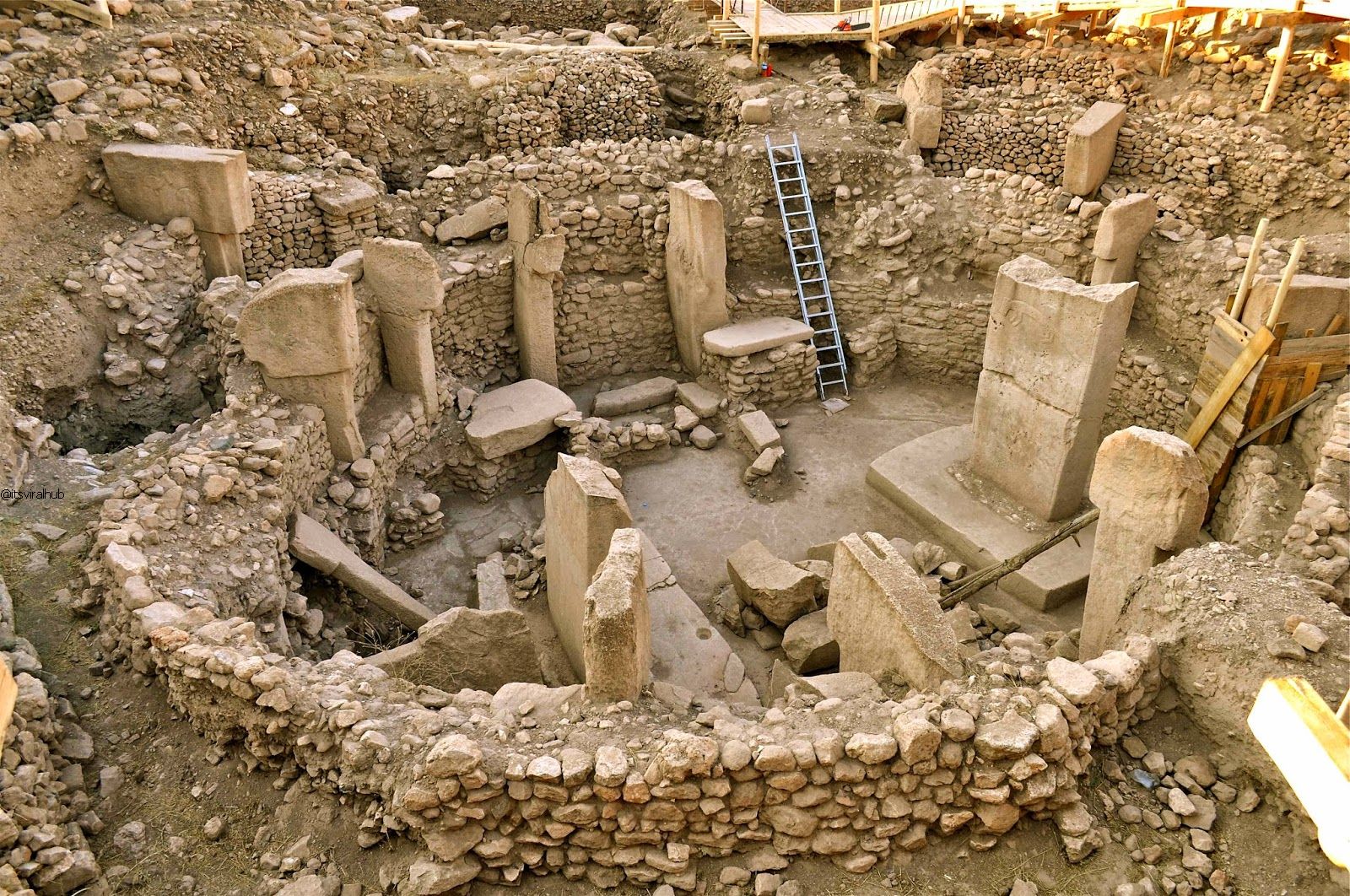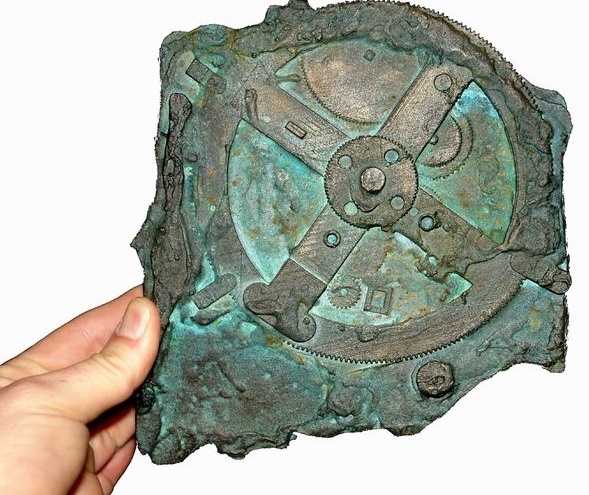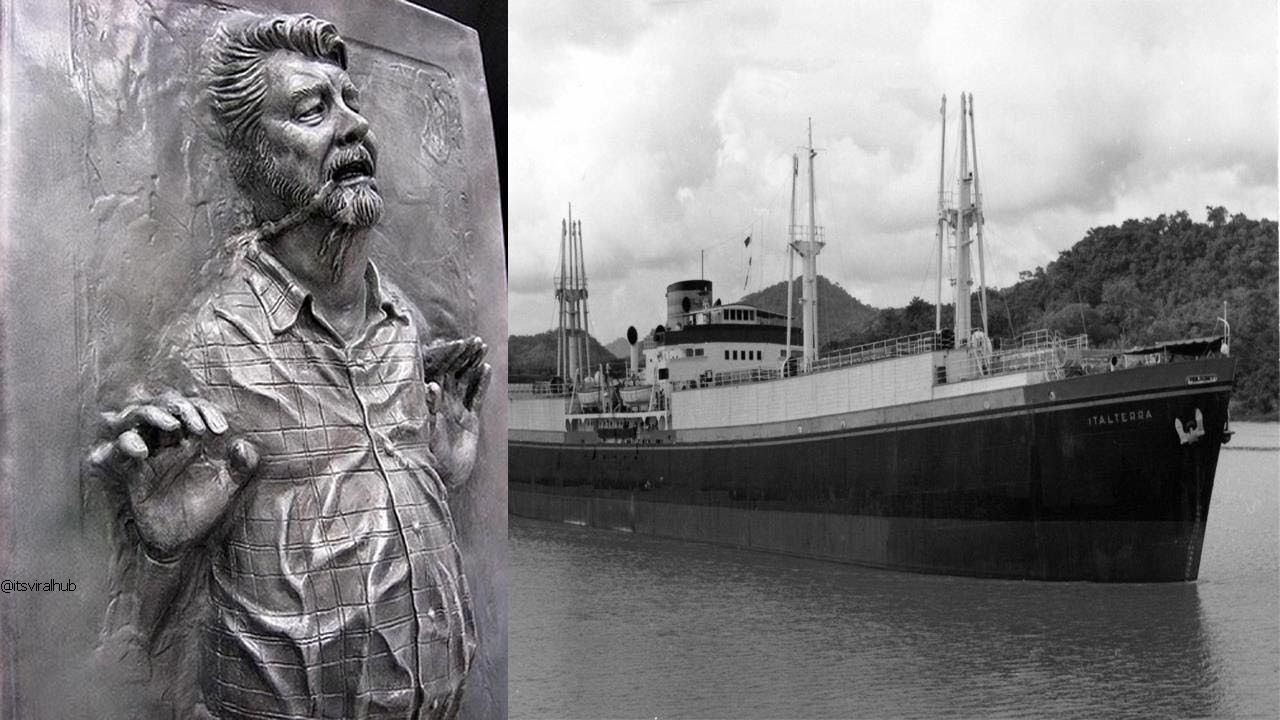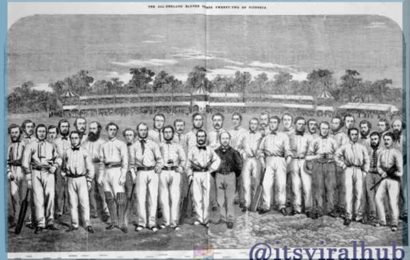GHOST ships, alien contact, and technology built thousands of years before their time. This dreadful rundown will make them look for the appropriate responses no one knows.
WHILE Harry Houdini prided himself on leaving gatherings of people from around the globe bewildered at his figments and getaways, present-day science has uncovered how he achieved a significant number of his scenes of greatness. Here are some biggest mysteries of all time.
Time doesn’t generally reveal insight into unexplained secrets, however.
Consider the 5-ton statues that spot remote Easter Island amidst the Pacific Ocean, or 5,000-year-old coins that have been discovered covered in the United States. Such peculiarities keep on baffling present-day science as specialists proceed — to date futile — to scan for judicious clarifications to the world’s most noteworthy unsolved puzzles, which are as jumbling as they are invigorating.
Biggest Mysteries of All Time
12. The Moai statues of Easter Island

The secret of Easter Island and the Moai statues that occupy it is something that the vast majority of us are at any rate enigmatically comfortable with, however, the way that there are still such a large number of true blue unanswered inquiries encompassing the island is in itself very astounding.
Back in Easter in 1722, a Dutch voyager chanced upon something abnormal. He was initially looking for a theoretical land mass called Terra Australis, thought to exist on the grounds that at the time they suspected that the northern and southern halves of the globe ought to be adjusted.
Rather, however, he found an island in the Southeastern Pacific Ocean, which he would later name Easter Island because of the date of its disclosure.
He was shocked to find that the island was occupied, and he revealed seeing 2,000 to 3,000 individuals there. This was astounding, on the grounds that the island is … well … extremely distant from whatever else by any means.
A stunning 1,900 kilometers from the closest possessed land, and around 3,500 kilometers off the shoreline of Chile. But then regardless of its extraordinary remoteness, The Rapa Nui individuals who called the island home figured out how to cut and transport an incredible 887 statues, some estimating 33 feet tall and weighing up to 82 tons, a normal of 17 kilometers each. Also, this all happened around 700 years prior. The greatest residual question mark concerning the statues themselves is unquestionably their transportation.
Hypotheses have been suggested that include ropes, sleds, rollers, leveled tracks, or even that the general population gradually shook the statues forward and backward to their goal. Endeavors have been made to reproduce the techniques that could have been utilized, however, most brought about harm to the statues or would have required many individuals to gain only 0.08 kilometers of ground for every day.
In all actuality, we don’t generally know precisely how they did it. Be that as it may, however, the Rapa Nui figured out how to move the Moai, and they would have surely should have been staggeringly tolerant, innovative, and composed to make them a reality.
11. The Confederate Treasury

10. Gobekli Tepe

Now and again, a revelation happens that powers us to reconsider what we contemplate humankind, and how we got to where we are today.
Turkey’s Göbekli Tepe is unquestionably one such revelation. The site, situated at the highest point of a mountain edge, is made out of in excess of 200 columns, up to 20 feet in tallness and weighing up to 20 tons, masterminded in about 20 circles.
A significant number of the columns have savage creatures engraved on them. What’s more, none of this would amaze in the event that it was inherent, say 2000 B.C., yet Gobekli Tepe was assembled over 13,000 years back, originating before Stonehenge by over 8,000 years.
Its reality totally up-closes the customary perspective of the ascent of civilization. The possibility of a religious landmark worked by seeker gatherers goes against our insight about both religious landmarks and seeker gatherers.
Before the revelation of this site, we trusted that the general population of that time needed complex representative frameworks, social pecking orders, and the division of work — three requirements, we thought, for building a 22-section of the land huge sanctuary. Formal religion, in the mean time, should have seemed simply after horticulture delivered such progressive social relations.
The discoveries at Göbekli Tepe, in any case, recommend that we may very well have the story in reverse — maybe it was the need to fabricate a hallowed site that first fuelled seeker gatherers in their mission to sort out themselves as a workforce, to settle down in one place, to secure a steady sustenance supply, and to, in the end, create farming.
Be that as it may, the presence of the site brings up much a larger number of issues than it answers. How did an itinerant, neolithic man figure out how to sort out a workforce to finish this site? Why was it assembled?
Why did it originate before comparable structures by a large number of years? Exhuming began on the site in 1996, and a large portion of despite everything it stays to be uncovered, however until further notice these inquiries must go unanswered.
9. Sea Peoples

During the late Bronze Age, civilisation was progressing at an impressive rate in the Aegean and eastern Mediterranean regions. Kingdoms rose, order was established, and technology advanced. The Mycenaean and Minoans had intricate palaces in Greece and Crete, the Hittites dominated what is now Turkey.
And the Canaanites controlled what would become the holy land — Israel, Lebanon, and Jordan. But in the years surrounding 1200 B.C., all of the would change.
Over the course of a single generation, all of those civilisations would be almost entirely wiped off the map, and those that did survive would be set back a thousand years, losing the ability to write and turning back the clock on the sophistication of their art, architecture, and pottery in the hundred years to follow.
This event was part of what is known as the Bronze Age collapse, and it remains one of the largest dark spots in historians’ records. And one of the causes of this bizarre collapse was the mysterious “Sea Peoples” — a technologically inferior, unaffiliated group of seafaring warriors who raided the lands and are often credited with the collapse of these once-great civilisations.
The problem is, historians still have little if any idea of where these warriors came from, or what became of them after their conquest finally ended in Egypt. Also unknown is how the Sea Peoples managed to conquer civilisations hundreds of years more advanced in weaponry.
But without solid records from the time, and with only scattered details of the origins of these strange raiders, we may never know their true identity.
8. Antikythera Mechanism

The Antikythera mechanism is an incredibly intricate analogue computer found in a shipwreck near Greece in the year 1900.
The device was used to determine the positions of celestial bodies using a mind-bogglingly complex series of bronze gears.
The device in and of itself would already be impressive, but the unbelievable part of the mechanism? It was created 100 years before the birth of Christ, and more than 1,000 years before anything even approaching its level of technological complexity and workmanship would be discovered again.
The device also came long before our modern understanding of astronomy and physics. The Antikythera mechanism was built over 1,600 years before Galileo was born, and over 1,700 years before Isaac Newton was born.
Now, the rational explanation is that the device used working theories on the movements of celestial bodies established at the time and some remarkably brilliant craftsmen.
But if you were looking for a jumping-off point for your new time-travel novel or alien sci-fi epic, this one should hit you like a 10-tonne brick. Because of all the explanations we can offer, the Antikythera mechanism raises even more questions.
7. Oak Island Money Pit

All through history, we’ve never stopped to be fascinated with stories of covered fortune, mystery engravings, and booby traps. Be that as it may, a standout amongst the most persisting fortune riddles ever originates from a little island off the bank of Nova Scotia in eastern Canada.
Oak Island is the home of what is casually known as the “Cash Pit,” a fantastically profound gap of staggeringly expound development found in 1795.
More than two centuries of removal have uncovered no fortune up to this point, however, what has been found is apparently similarly as captivating. Underneath the surface of the pit are a progression of wooden stages, and significantly more profound, flooding components framed from various underground waterways prompting water.
On the first occasion when somebody figured out how to burrow sufficiently profound, the whole pit was promptly overflowed, and because of the development of the system, it would top back off with water as quick as you could evacuate it. At the 90-foot stamp, an engraved, encoded stone tablet was discovered that was uncovered to state “forty feet underneath, two million pounds lie underneath.”
I look for whatever the island is concealing, the cash pit has pulled in the consideration of several hunt parties, including previous president Franklin Delano Roosevelt, who in his childhood went through a late spring with kindred Harvard graduates looking for the fortune. It’s really a verifiable peculiarity, however considering that we’re no nearer to discovering who burrowed the pit and why, following 200 years of looking, one must think about whether we ever will.
6. The Voynich Manuscript

History is covered with antiquated dialects that have been decoded, and figures that have been broken, yet in the event that there is one odd event that denotes a headache for historians, it must be the Voynich original copy.
Bought by uncommon book merchant Wilfrid Voynich in 1912, the content doesn’t show up especially astounding at first look.
A progression of passages throughout 240 pages joined by outlines and graphs, broken into what have all the earmarks of being six unmistakable areas. The segments seem to portray diverse themes of homegrown, galactic, organic, cosmological, and pharmaceutical nature.
What is so surprising about the original copy, at that point? Indeed, It’s composed in a dialect obscure to man and has avoided all endeavors to translate its substance right up ’til the present time.
The composition is made out of more than 170,000 characters written in designs that look like a common dialects. Twenty or 30 glyphs can represent almost the whole content, except for a couple of stray characters that seem just once.
It was composed easily, with no confirmation of blunders or remedies anyplace, and no proof of stops amid composing, which one would expect with encoded content. Nearly as to recommend that the dialect was normal for whoever composed it.
Cell based dating uncovered that the content was composed between the years 1404 and 1438, and despite the fact that speculations have been offered, no one really knows the creator of the work.
Because of the various fizzled endeavors to unravel the Voynich original copy, numerous have proposed that the composition is an intricate trick, and can’t really be deciphered. Be that as it may, until the point when reality winds up known, this unusual content will stay one of history’s most captivating unsolved puzzles.
5. The WOW! signal

On a late spring night in 1977, Jerry Ehman, a volunteer for SETI, the Search for Extraterrestrial Intelligence, recorded the most grounded hard confirmation of extraterrestrial life in mankind’s history.
Ehman was examining radio waves from profound space, as his volunteer position involved, planning to run over a flag that drag the signs of one sent by insightful outsiders.
What’s more, on that night, he saw his estimations spike, bigly. The flag went on for 72 seconds, the longest timeframe it could be estimated by the exhibit that Ehman was utilizing. It was unmistakable and seemed to have started from inside the Sagittarius heavenly body close to a star called Tau Sagittarii, 120 light years away.
Ehman composed the words “Amazing!” on the first printout of the flag, therefore its being known as the “Stunning! Flag.”
In case you’re wondering what the object is about the flag, consider it thusly — the flag that was gotten was at correctly the correct recurrence that wouldn’t be translated as clamor, and wouldn’t be captured along its adventure.
As it were, whether we would send a flag out into the universe to attempt to speak with an outsider race, is precisely the recurrence we would utilize.
In spite of the amazing event nonetheless, all endeavors to find the flag again have fizzled, prompting much discussion and disarray about its sources and its importance.
4. The real identity of Benjamin Kyle

In 2004, A man that would soon adopt the name Benjaman Kyle woke up outside of a Burger King in Georgia without any clothes, any ID, or any memories.
He was diagnosed with retrograde amnesia, unable to remember who he was, and with no identification, unable to find out. Now, if this was like any other story about amnesia, it would have probably resolved itself soon afterwards. But the trouble was, authorities couldn’t identify him either.
Local and state police failed to discover him in any known records despite an exhaustive search. And then in 2007, the FBI became involved, but were also unable to identify him, making him the only US citizen in history listed as missing despite his whereabouts being known.
One particularly unfortunate side effect of not having your own identity is that, without a social security number, he is unable to obtain full-time employment, and without memory of any past skills or disciplines, the problem is only amplified.
After a student documentary was created about Benjaman, news media picked up the story, which attracted the attention of local business owners.
One of the owners offered him a job washing dishes, a job which he is still working today. This enabled him to move out of the woods where he was sleeping, and into an air-conditioned shed, where he now stays. But his true identity and past remain a mystery to this day.
3. The Dancing Plague of 1518

The account of the moving sickness sounds like something straight out of fiction.
On a late spring’s day in the town of Strasbourg amid the year 1518, a lady started moving fiercely in the road. The day transformed into night, the night transformed into morning, and she was all the while moving.
Inside seven days, 34 others had joined her, moving as if they were controlled, without stop, for no evident reason. Also, inside a month, the quantity of artists had achieved 400. Religious sermons were called to address the issue.
Doctors were brought in to record the occasion and endeavor to discover an answer. And at the same time, the moving intensified. Numerous turned out to be sick or passed on because of weariness, strokes, or heart assaults. The specialists in the end chose that the main way the artists would recuperate is whether they moved it out of their frameworks.
Overlay corridors and a grain showcase were opened to the artists, and a wooden stage was even built for them. Performers were even gotten to keep those influenced moving. Various hypotheses have been proposed for the reason for the unusual occasion, including harming, epilepsy, typhus, mass psychogenic sickness, and even furtively planned religious customs, yet right up ’til the present time regardless we have no response for this genuinely amazing verifiable occasion.
2. The S.S. Ourang Medan

In June 1947, different boats voyaging exchange courses in the strait of Malacca, off the shore of Malaysia, got an unnerving SOS message that read: “All officers including chief are dead lying in graph room and extension. Potentially entire group dead.” After a brief timeframe, one last message was gotten, that read just … “I bite the dust.”
Close-by ships distinguished the wellspring of the flag as originating from a Dutch tanker, the SS Ourang Medan.
The closest vendor deliver, The Silver Star, went as quick as they could to the wellspring of the pain flag. Be that as it may, after boarding the Ourang Medan, they were stunned by what they found: Every individual from the group lay dead, their bodies scattered on the decks.
The eyes of the men were as yet open and appearances of sheer fear were solidified on their countenances. The Silver Star’s gathering discovered the expired radio administrator too, his hand still on the Morse Code-sending key, and eyes completely open.
Be that as it may, oddly, there were no indications of wounds or wounds on any of the bodies. The Silver Star’s group chosen to tow the ship back to port, yet before they could get in progress, smoke started exuding from the decks underneath.
The loading up party immediately came back to their ship and scarcely had sufficient energy to escape before the SS Ourang Medan detonated and quickly sank. Some estimated that billows of toxic regular gases rose from gaps in the seabed and inundated the ship, and others have even faulted the event for the extraordinary, however right up ’til today, the correct destiny of the boats group remains a puzzle.
1. Baghdad Battery

When we think of electricity, most of us recall back to a time in school when we learned about Benjamin Franklin, a metal key, and a kite. The year of Franklin’s fateful discovery was 1752.
But the existence of the Baghdad batteries suggests the possibility of far more shocking scientific advances in the field — a mind-blowing 2,000 years earlier. Discovered in 1936, and thought to have been created in the Mesopotamian region, these clay pots contain galvanized iron nails wrapped with copper sheeting, and some archaeologists theorize that an acidic liquid was used to generate an electric current inside the jar.
If correct, these artefacts would predate the currently accepted timeline for the invention of the electrochemical cell, attributed to Alessandro Volta, by more than two millennia.
Whether or not the artefacts were in fact used as batteries is highly contested by archaeologists, and what the resulting electrical current was used for is also a complete mystery, as we have no historical records from that time.
Some people theorise that they might have been used for electroplating objects, but such evidence of their use for that purpose is yet to be found.
What we do know, however, is that the batteries would actually work, at least in theory.
At least twice, experiments were conducted to test replica constructions of the batteries, including once on the show Mythbusters, and both experiments showed that the batteries were indeed capable of producing electricity when filled with an acidic solution. But for now, the true purpose of these artefacts remains unknown.
This article originally appeared on AskMen.



